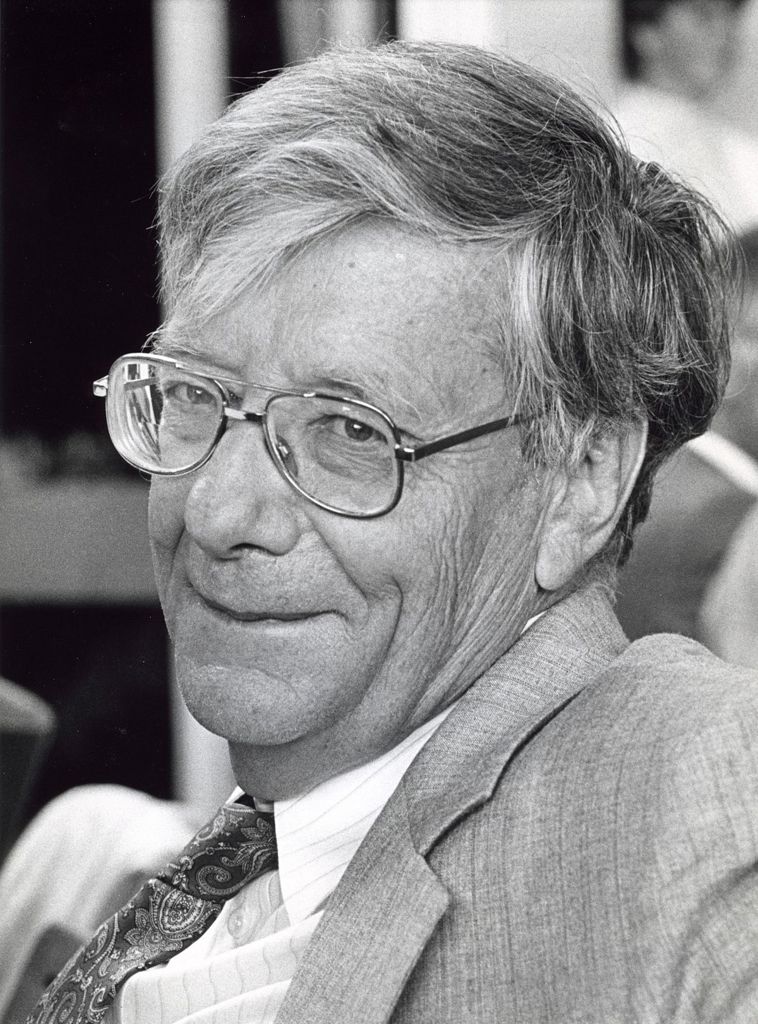Nicolaas Bloembergen

Born 11 March 1920, in Dordrecht, the Netherlands, Nicolaas Bloembergen spent his early years just outside of Utrecht. His grandfather, who held a doctorate in mathematical physics, and Bloembergen’s own innate curiosity about mathematics and physical phenomena led to a career in physics.
Rigorous liberal arts studies influenced Bloembergen’s teen years as did a love for outdoor activities including competitive field hockey. While a student at the University of Utrecht, Bloembergen excelled, but his undergraduate years were marked by the increasing threat of the German Reich. Before the Nazis closed the university in 1943, Bloembergen experimented with solid matter and noise in photoelectric detectors. He also completed a master’s of science degree.
In 1945, with a desire to continue his research, Bloembergen enrolled at Harvard University. He arrived six weeks after Purcell, Torrey and Pound had detected nuclear magnetic resonance (NMR) in condensed matter. As a graduate assistant, Bloembergen helped develop an early NMR system. Their work in the unexplored field of NMR resulted in one of the most-cited physics papers and is commonly referred to as BPP (N. Bloembergen, E.M. Purcell and R.V. Pound, Phys. Rev. 73, 679, 1948).
Bloembergen used much of the material for his Ph.D. thesis: "Nuclear Magnetic Relaxation." The paper enabled him to obtain a doctorate from the University of Leiden in 1948. His research also established the nuclear spin relaxation mechanism by conduction electrons in metals and by paramagnetic impurities in ionic crystals, the phenomenon of spin diffusion, and the large shifts induced by internal magnetic fields in paramagnetic crystals.
Among his team’s projects: studying nuclear quadrupole interactions in alloys and imperfect ionic crystals, discovering the scalar and tensor indirect nuclear spin-spin coupling in metals and insulators, and understanding a variety of cross relaxation phenomena. This work, coupled with experiments in microwave spectroscopy, led the group to develop a crystal maser in 1956. The solid-state maser produced more power than gas masers, enabling a wider range of study.
When lasers were developed in the early 1960s, Bloembergen and his group used them to study the optical properties of matter at high light intensities. They devised a theoretical model for mixing two or more light waves and experimented with mixing multiple light waves.
In the now classic work Nonlinear Optics, published in 1965, Bloembergen outlines the group’s theoretical and experimental efforts to analyze how electromagnetic radiation interacts with matter. They wanted to extend the general principles of Maxwell’s electromagnetic theory and quantum mechanics to include “higher order interactions between light and matter in terms of their nonlinear susceptibilities.”1 Today, the application and control of nonlinear optical effects has become an essential part of a variety of areas such as optical communication, biomedical optics, and chemical analysis. For contributions to the development of nonlinear laser spectroscopy, Bloembergen received the Nobel Prize in 1981. He was named a Fellow of OSA in 1967 and elected to Honorary Member in 1984.
Bloembergen received many other awards for his work including the National Medal of Science (U.S.) and OSA’s Frederic Ives Medal. He published over 300 papers. During his career, Bloembergen was active in promoting the field of physics, serving as president of the American Physical Society in 1991.
Bloembergen retired from the faculty of Harvard University, USA, in 1991 and then spent many years at University of Arizona, USA, continuing his research in nonlinear optics with special emphasis on interactions of picosecond and femtosecond laser pulses with condensed matter and of collision-induced optical coherences.
Nicolaas Bloembergen passed away on 5 September 2017.
For more on Nicolaas Bloembergen watch his OSA History Interview.
Reference
Bloembergen N., Nonlinear Optics, Reading, MA: W.A. Benjamin, Inc., 1977 (1965). p. 229. http://garfield.library.upenn.edu/classics1979/A1979HK74600001.pdf, accessed March 7, 2013
Nicolaas Bloembergen died on 5 September 2017, please see Optica's memorial entry.
Multimedia
Document Created: 26 Jul 2023
Last Updated: 28 Aug 2023
